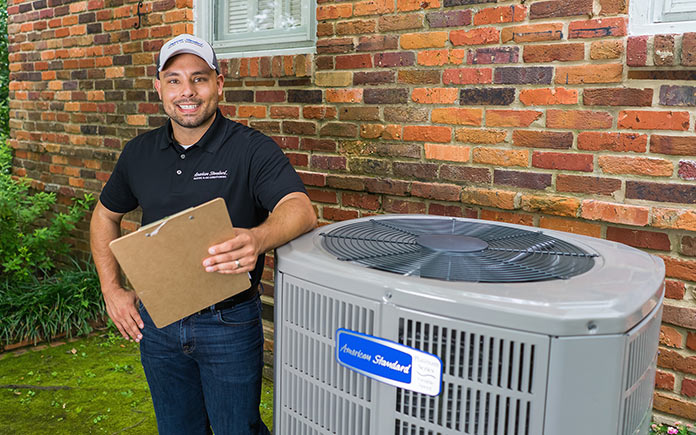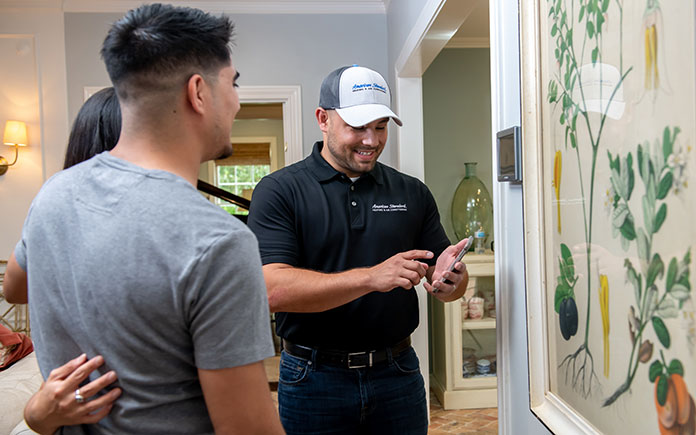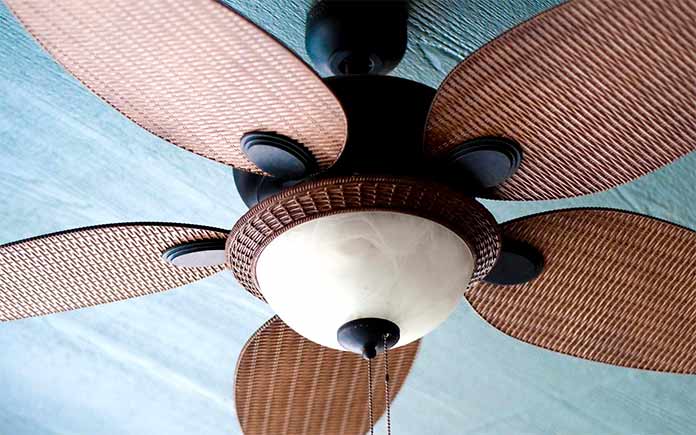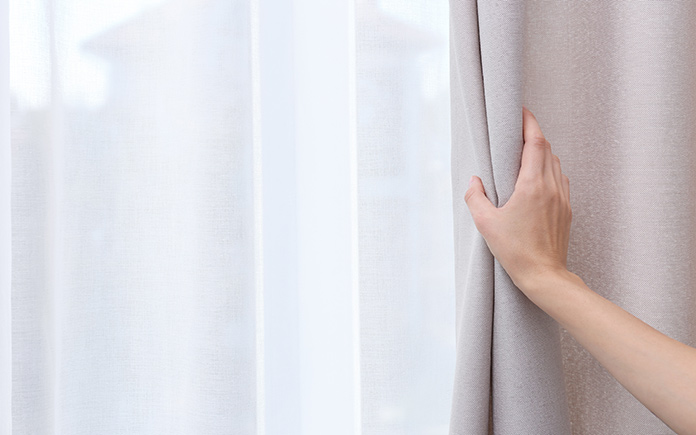Heating a home may keep you comfortable, but it also can be expensive. Looking to reduce your heating bills? Follow these tips.
1. Use an Efficient Heat Pump
Heat pumps can be a more energy-efficient option than furnaces because it’s easier to transfer heat than to make it. But not all heat pumps are created equal, and not every region of the country is suited to only heating with a heat pump. So it’s important to do a little homework; otherwise, it could cost you more in the long run.
The most important feature to consider when selecting a heat pump is its Seasonal Energy Efficiency Ratio, or SEER, which measures the appliance’s cooling efficiency. Basically, the lower the SEER, the less money you’ll save on the system’s operation.
Most heat pumps installed before 2006 are 10 SEER or lower, which means you’re saving just about 20 percent on your heating bills.
That’s unreasonable when you could use a system like American Standard Heating and Air Conditioning’s AccuComfort Platinum 20 Heat Pump, a 21 SEER system that saves you a whopping 62 percent on your heating bill.
And, while other systems cycle on and off, which can cause significant temperature swings inside your home, AccuComfort makes constant, small adjustments to prevent this from happening.
That means you’ll feel consistent comfort from a system with optimal efficiency.



2. Get Regular Tune-Ups
A heat pump is like a car — you can have the best model in the world, but if you don’t take care of it, sooner or later, problems will develop.
A heat pump without regular, professional maintenance could leave you cold when temperatures dip. Or, at the very least, its performance could decline, resulting in higher heating bills.
You can do some things yourself — like check the outdoor unit and remove any debris; clean or replace your air filter; clean air events; and check the airflow. But some things require professional assistance.
It’s best to hire a professional heating, ventilation and air conditioning technician for bi-annual service, between seasons, to tune up the system. They can inspect the ducts, blower and indoor coils, and diagnose the system for optimal efficiency.



3. Install a Smart Thermostat
Setting your thermostat can keep your home nice and warm, but it also can send your heating bills skyrocketing.
Let’s face it, we don’t need to keep our homes at the same temperature all the time — especially when we’re away from home — and it’s not always easy or convenient to manually adjust the thermostat to save energy.
Smart thermostats that connect to your wireless network — like American Standard Heating and Air Conditioning’s Gold 824 Control — have earned their name. They can adjust your home’s temperature, whether you’re home, asleep or away, and they can monitor your climate control patterns and find ways to save energy.
In fact, with the Energy Star-certified Gold 824 Control, you can check out the five-day weather forecast and schedule four daily heating and cooling periods. Yes, thermostats have come a long way!
Best of all? Smart thermostats offer remote access, so you can grab your internet-enabled mobile device and change the temperature, whether you’re in bed at home, in another state or even another country.



4. Reverse Your Ceiling Fan
Did you know your ceiling fan has a ‘secret switch’ that can make you feel cooler or warmer, depending on its setting?
This switch determines whether the fan blades rotate clockwise or counterclockwise. Set your fan to clockwise on low to prevent the fan from creating a strong draft.
Heat rises, which means the temperature near the ceiling is higher than at the floor level. So, when you set the fan to clockwise on the lowest speed, it pushes air near the ceiling up and outward. This sends it down near the room’s perimeter without creating a strong draft..
This means you can set the thermostat lower — which slashes your heating bills and helps the environment. A win-win situation!



5. Draw the Curtains
Sometimes, the best thing you can do to heat your home and help slash heating bills is the easiest thing: Ddraw your curtains after sunset!
During daylight hours, keep your curtains open, because your home benefits from the sunlight’s radiant energy — free heat!
But when the night comes, adding another layer between the outdoor elements and your home’s interior will help prevent your home from losing heat.
It’s even better if your curtains have a thermal lining. , but even if If they don’t, there’s an affordable solution: line them yourself with fleece!
YouTube and Pinterest have all kinds of tutorials for lining curtains, with sewing and no-sew options. So, this is a DIY project anyone can tackle to stay comfortable!
That takes care of the inside, but don’t forget the outside! Those windows could have cracks and gaps due to seasonal expansion and contraction.
Grab a caulk gun and some weatherstripping and seal those areas to prevent air leaks!
These are some of my favorite ways to keep your home nice and toasty. Share yours in the comments!



